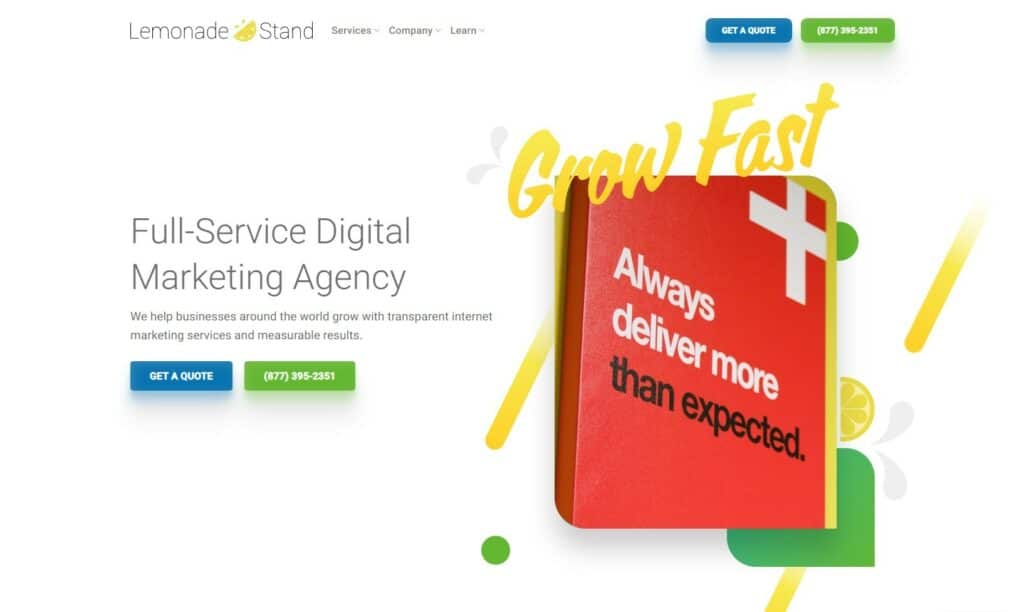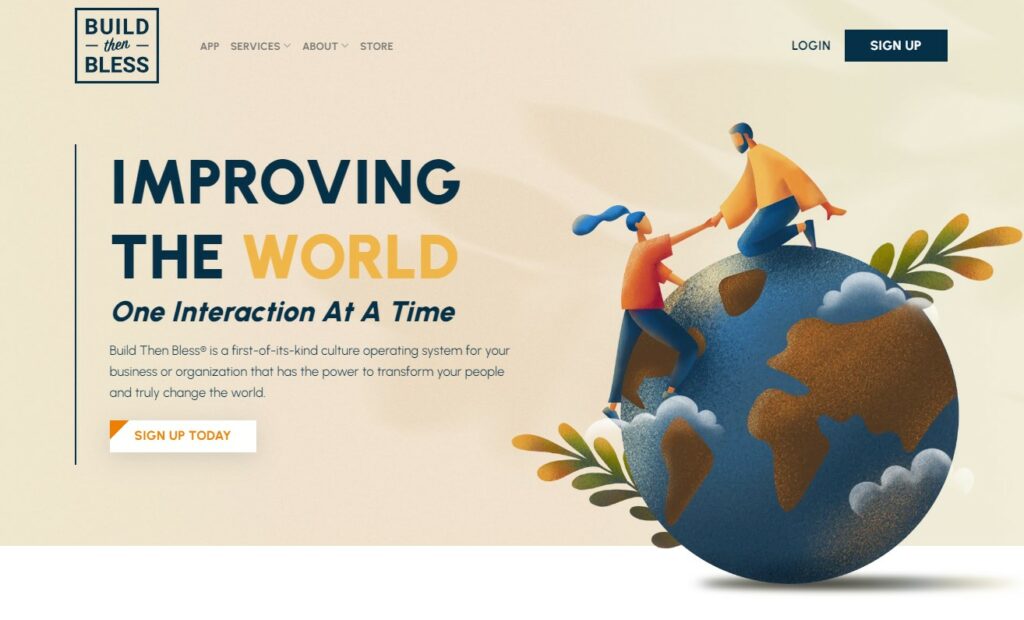At Lemonade Stand, we believe in the principle of paying attention to the details.
It’s the way you make people know that you truly think they are special and that the relationship you have built with them is meaningful to you.
“Pay Attention to Detail” means that you are constantly vigilant for any and all details that might make someone have a better experience with you, and then you are actually acting on those details that you find.
It’s similar to our other core value of “Listen… Really… Listen…” but taken to a whole new level. This is paying attention to all of the details, which can include picking up on things in an email or a conversation, remembering important dates, giving a prompt response when a client emails or calls in, delivering high-quality work with few to (hopefully) no errors, etc.
Being able to pay attention to the details is one of the key characteristics that we look for when we are hiring new team members, and then we seek to continually train our team on how to do this better.
We never want to miss a detail.
Included as part of our day-one trainings for new team members are instructions on how to properly answer a phone call and an email.
It’s really important to us!
I’m including the exact training that we give to our team members here, so that you can see what I mean.
How We Answer the Phone
We answer the phone cheerfully and ready to serve! Many times, we may think we’re speaking “ok,” but because the person on the other end of the phone can’t see your face, they may not have the same experience. That’s why you need to be intentionally joyful when answering the phone… talk with a smile and with the intention of wanting to make the person on the other end of the line smile as well.
Answer the phone with the following greeting: “Lemonade Stand… this is John… how can I help you?”
If they present a problem that you’re unable to help them right away with, ask them if you could place them on a brief hold while you get someone on the line who will be able to help them immediately.
If they ask to speak with another team member, ask them their name and which company they are with. If you’re unsure if it’s a client, politely ask what the call is regarding (to weed out sales/junk calls that you can send to voicemail).
Once they give you that information, ask them to hold and then call the extension of the team member. Let the team member know who it is and ask if they’re available to take the call. If the team member is available, then return to the client on hold and let them know you’ll be transferring them now.
If the team member is unavailable, let the client know they’re unavailable and ask if you can take a message or if there’s something you can help with immediately. If you’re unable to help and it’s an important matter (i.e. site down or billing issue), escalate to management.
If they are ok leaving a message, place the message on Groove as an open ticket for the customer with detailed information about the phone call. Also leave an @teammember note inside Groove. Finally, place a priority on the team member’s Yalla board to follow up with the ticket number with a specific due date.
Reporting back a list of notes after the call is how we ensure that nothing slips through the crack or that clients don’t ever say things like, “Well, I told someone on your team…” while the team member heard something differently.
Note: Every phone call, incoming and outgoing is recorded at Lemonade Stand for quality assurance.
1 Ring Policy
People hate having to sit on hold to get answers. They want to speak to a real person as soon as possible. That’s why we have a 1-ring policy. As soon as they pass through our automated attendant, the phone in the office will ring and we execute this policy…
- The phone is answered within 1 ring.
- There is always 1 person assigned to executing the 1-ring pickup rule throughout the day. When that person leaves their desk, they will assign it to someone else. If that person steps away from their desk, they assign it to someone else and so on.
- If the phone rings longer than one time, everyone is tasked to answer the phone immediately!
How We Answer Emails
Answer emails in a similar way to phone calls — cheerfully! Let customers know you’re smiling while you serve them.
When addressing emails, if you are unsure of the answer, that’s ok. At least get the customer a response to let them know we’re working on addressing their issue. Most of the time, the client just wants to know someone is looking at their request and working to address it.
Reply to the client and then assign it to the team member that is working on it in the same way we do phone calls… a note to @teammember in Groove and/or a task assigned to them on Yalla.
If you’re the one working on the request, reply to the email in this manner…
“John,
Man, it’s great to hear from you. How are you and the kids doing? Hope you all are having a great summer.
I would love to help with your project! We can definitely take care of that for you.
Do you have some time today to jump on a quick call? If so, feel free to call me at the number below at your convenience. Or let me know what the best time and number to reach you at is and I’ll be happy to reach out.
Thanks and please let me know if I can help you in any way. Have a great rest of the day!”
How to Write an Email
If you were to break down the email above, it looks a little something like this:
- Greeting – Don’t talk like you’ve got a suit and tie on… just be warm and speak like you would in person. We write our emails relationally.
- Praise & relationship building – Take down defenses by showing someone that you genuinely care about them.
- Take time to address concerns – Detail how you can solve their problems.
- Next steps or plan of action – Be straightforward, even if it’s bad news… but no matter what you’re saying, make sure you always provide a solution that lets them know you’re willing to go above and beyond to resolve it.
- Show ‘em some love on the way out – If the email had something they didn’t like hearing, at least you hugged them on your way out. 🙂
Also, please note the correct grammer, line spacing, and the way we’ve separated thoughts. Write like this in all we do.
Insanely Fast Support
People hate having to wait days or even hours for answers. Most agencies are notorious for slow response times… not Lemonade Stand! If a customer emails us, we work to answer their question or to at least notify them within just a few minutes that someone is taking care of their request.
If we’re unable to answer within 10 minutes, we DO NOT let an email go unanswered past any Groove meeting. Groove meetings are unable to finish until EVERY ticket has been replied to, assigned to a team member, and has a delivery date attached to it.
Good vs. Great
Hopefully you can see from the above trainings that this really does matter to us. We want our team members to be constantly and consistently paying attention to the smallest of details, even just when answering an email or a phone call.
It’s crazy important! And it makes up one of the core values of our company culture.
Another great example of this comes from a chat I was recently having with our company president, John Rowa.
He was explaining the concept of good vs. great to me through the following story.
Recently after he had started working with the Lemonade Stand team, he sent out an email to a client.
After seeing that email go out, our company founder, Greg Trimble, went over to John and asked him about the email that he had sent.
John immediately started questioning himself and was wondering what was wrong with the email he had sent. He had reviewed it, and it seemed ok to him.
He asked Greg what was wrong with it and asked how he could improve.
Greg’s response was something like this, “Nothing was really ‘wrong’ with the email or the way that it was worded. I just noticed that the client asked a question in their email, and in your response you said that it was a ‘good question.’ I was just wondering why it was just ‘good’ and not ‘great.”
He went on to explain what he really meant.
When somebody asks us something, it’s so commonplace for us to respond with “good question…” but do we actually think it’s a good question? Are we really paying attention to what they’re even asking? How will a client respond when they see that you’ve responded with “good question.” Will it make them feel like they had some kind of incredible question to ask you? Will they assume that you’re just giving them a generic response that you would give to anybody?
It might seem like a silly little difference, but you have the power to completely change the way someone reads and feels about your response to them through subtle word choice.
That’s what paying attention to the details means. Focus on the way that you’re responding or acting. How could you be better? How could you ensure that the people you’re interacting with know that you are paying attention?
Are you even paying attention?
If you’ve never asked yourself that question, then chances are you could be paying a lot more attention than you currently are.
We love this core value, and we really do try to teach it to all of our team members. If you need any assistance with digital marketing, we hope that you’ll give our team the chance to not allow anything to fall through the cracks and to really pay attention to the details that matter most to you. We’d love to help you out!


